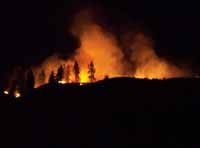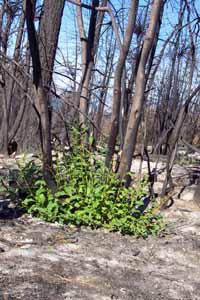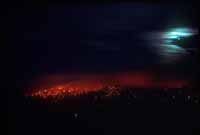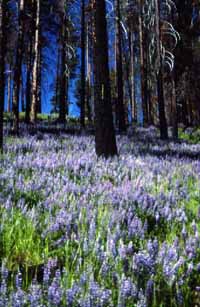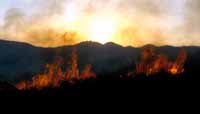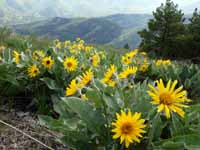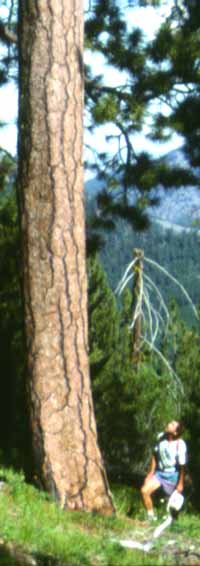Fire Effects
2001 Libby South Fire - Two Months After the Burn
This web page documents some of the fire effects on the 2001 Libby South Burn. The photos were taken on September 27, 2001, almost two and a half months after the Libby South fire started. There is also a web page with results of fire severity studies done in the Libby South fire area on October 5,2001.
We observed that even during dry summer months, young plants were sprouting from the lowland forest floor. Plants in the shrub-steppe ecosystem were resprouting from their roots. In both the shrub-steppe and burned ponderosa pine forests multitudes of birds and insects were thriving.
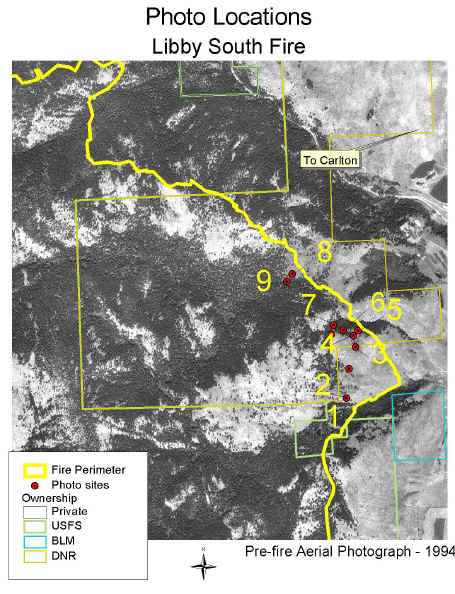
The above scan shows an areal view of the Libby South area forests prior to the fire. The points show the locations of images depicted in this report.
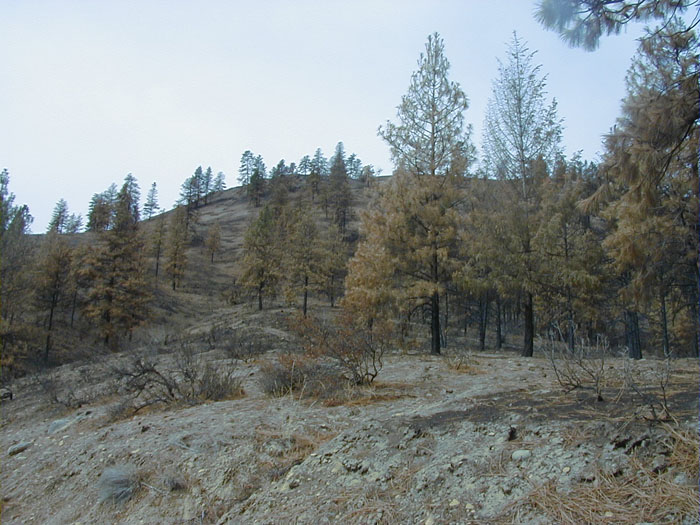
Image 1: Burned hillside along the road where the fire started.
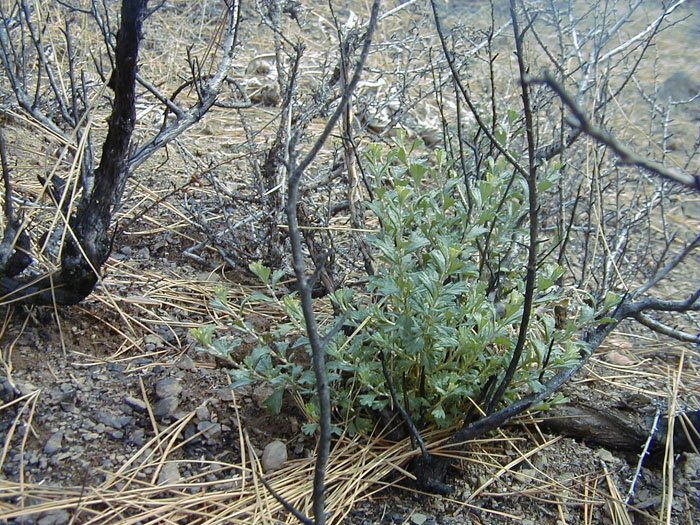
Image 2: Bitterbrush (Purshia tridentata) resprouting from burned plant. Over half of the shrubs in this area were resprouting.
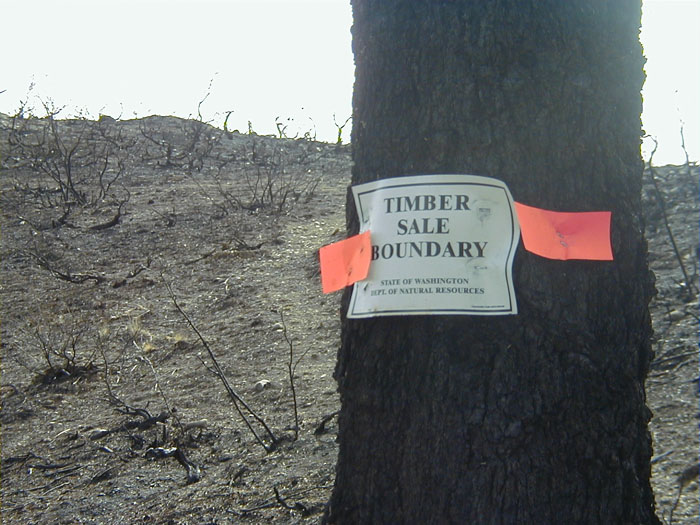
Image 3: Sections of Department of Natural Resources land have already been marked for timber sale. This
photo was taken on the edge of an area with high burn severity.
Most of the brush on the hillside was blackened and the char height on
the trees went up several meters. However, many trees within the
"Timber Sale Boundary" still had green needles, indicating
probably tree survival.
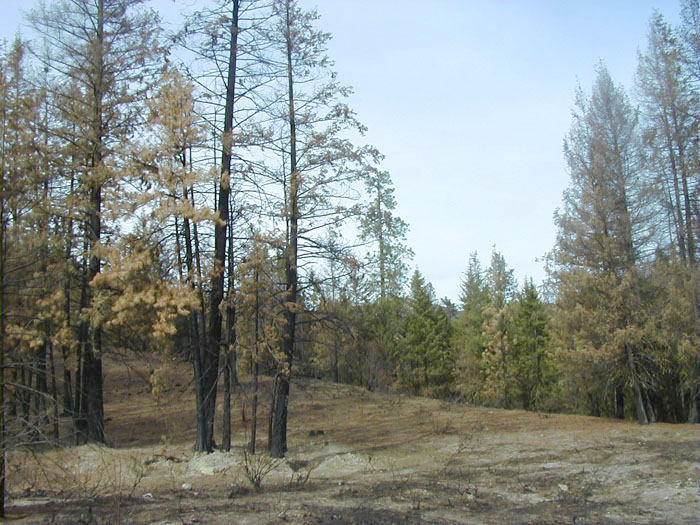
Image 4: This mosaic of live trees and trees with blackened crowns is within the DNR timber sale boundary.
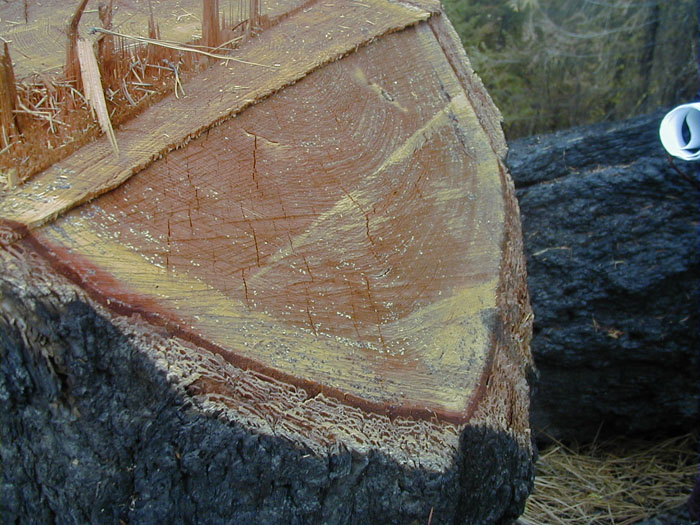
Image 5: This 225-year-old Douglas-fir tree was chopped down during fire suppression. The blackened outer layer of bark shows that the burn did not penetrate into the live part of the tree, and would not have killed it. In fact, a fire scar in the cambium of this tree shows that the tree withstood a fire that occurred 150 years ago. Many trees in this area have thick bark which allows them to survive fires.
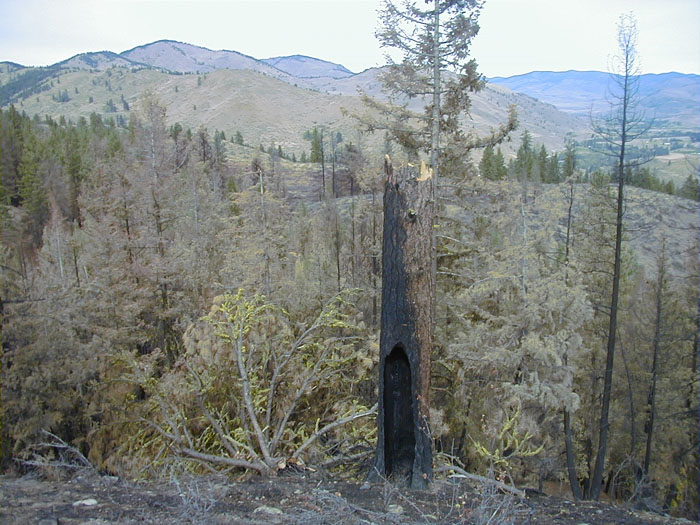
Image 6: The burned stump of this tree that was probably rotting before the Libby South fire looks north over the burn area.
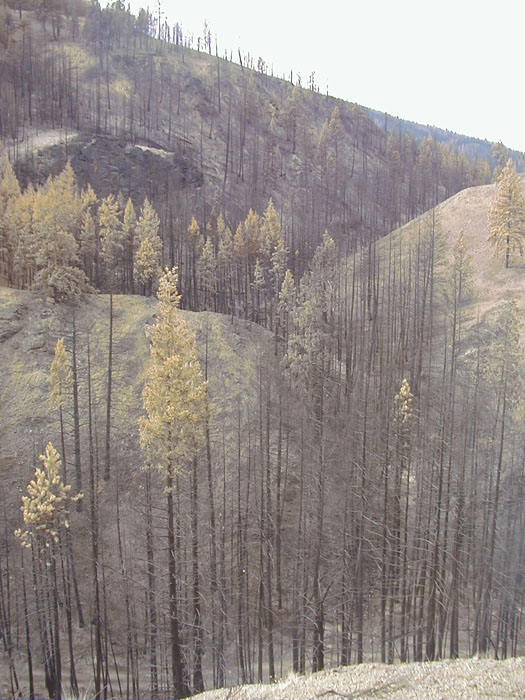
Image 7: Ponderosa pine on the steep slopes in the Libby South fire burn area. Some trees on this hillslope
have lost all of their needles and others have brown or green needles.
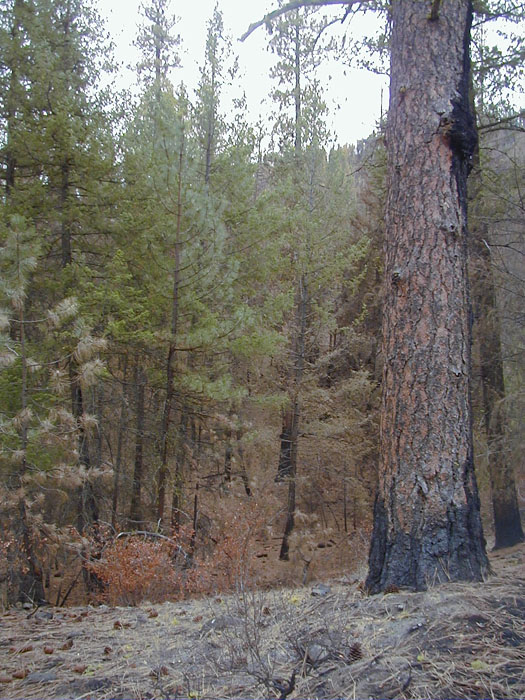
Image 8: The light underburn in this area left many of the ponderosa pine trees unaffected. Almost ninety percent of the canopy in this area is still alive.
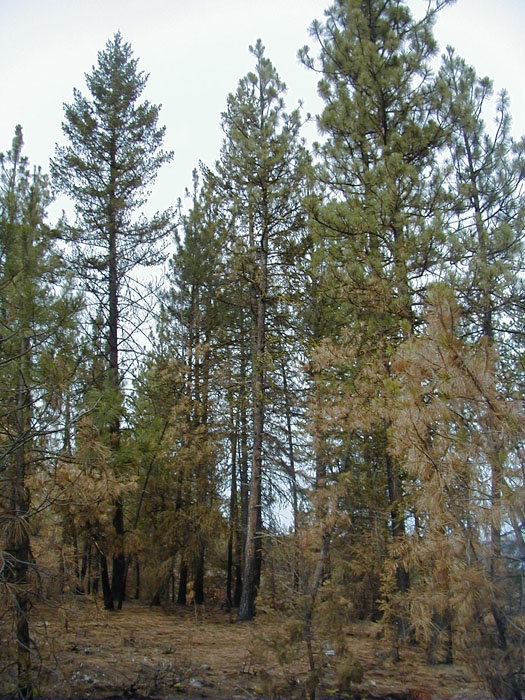
Image 9: This group of trees shows another example of the light underburn and live ponderosa pine trees that will benefit from this fire.
Copyright © 2009 Pacific Biodiversity Institute
PO Box 298, 517 Lufkin Lane
Winthrop, WA 98862 509-996-2490
